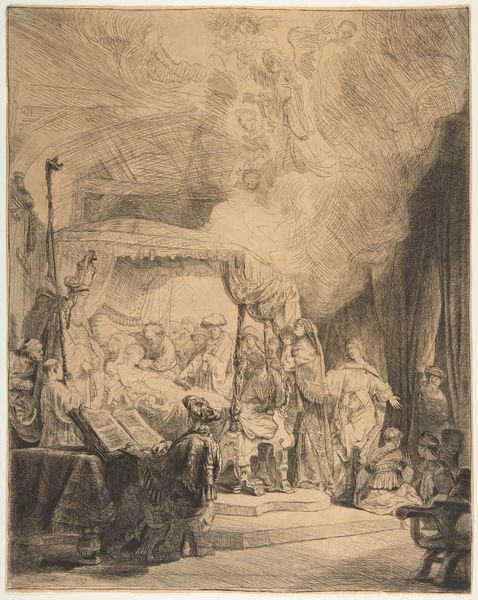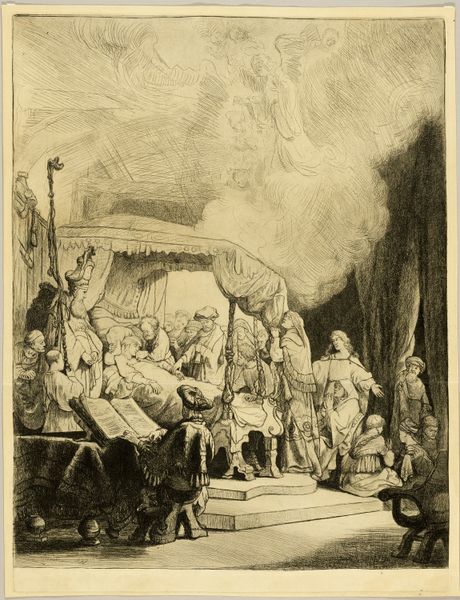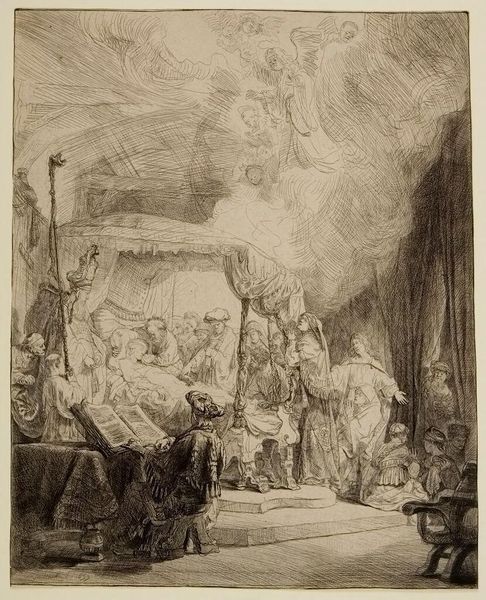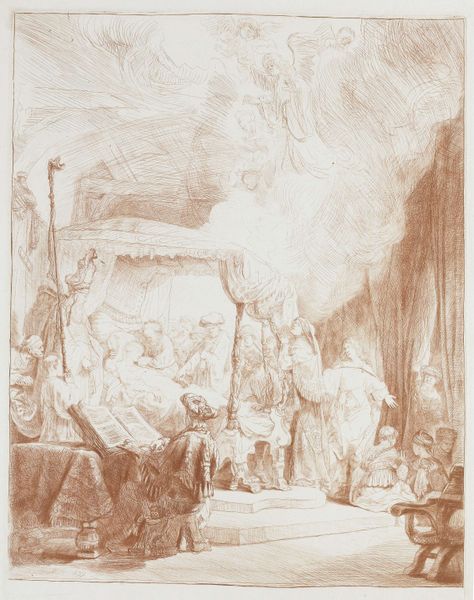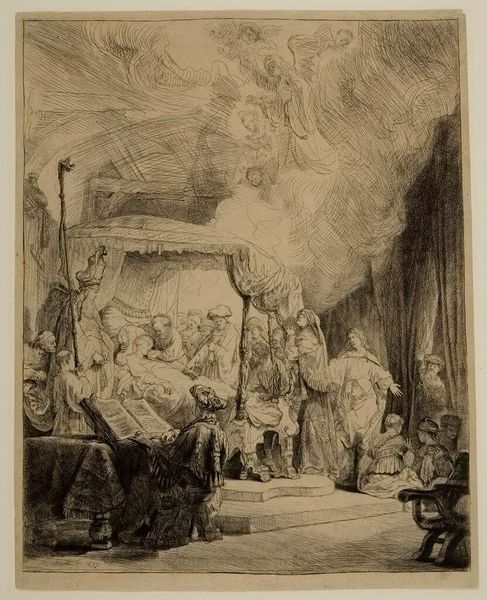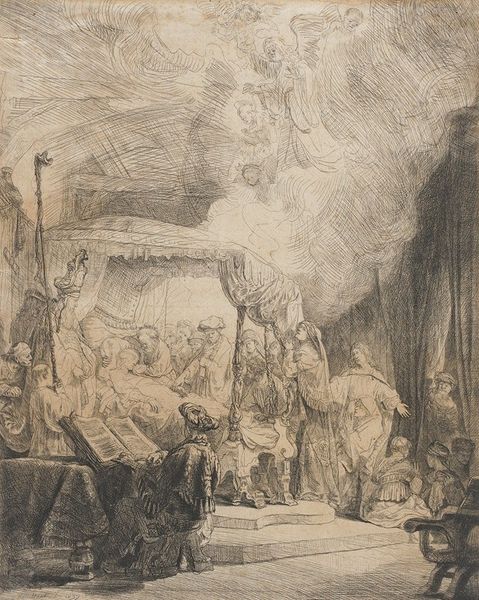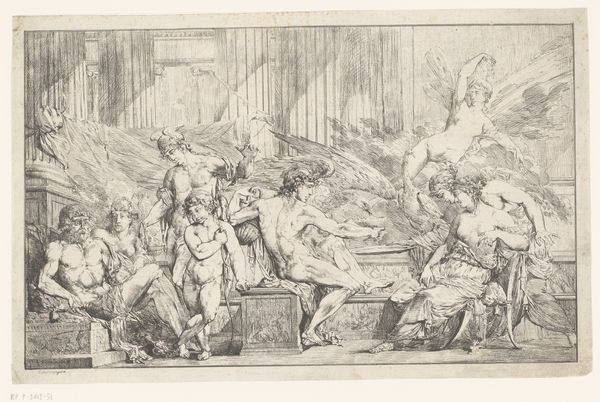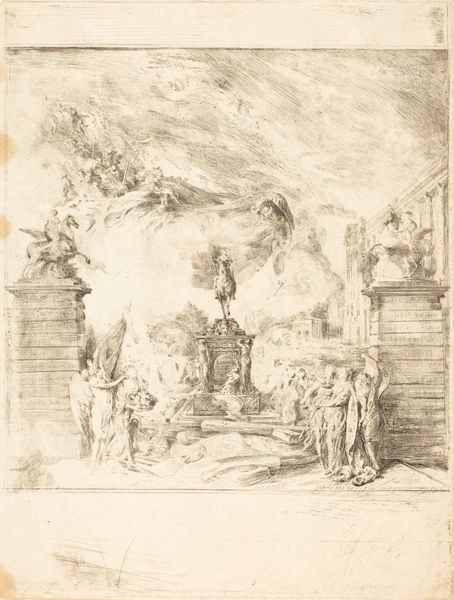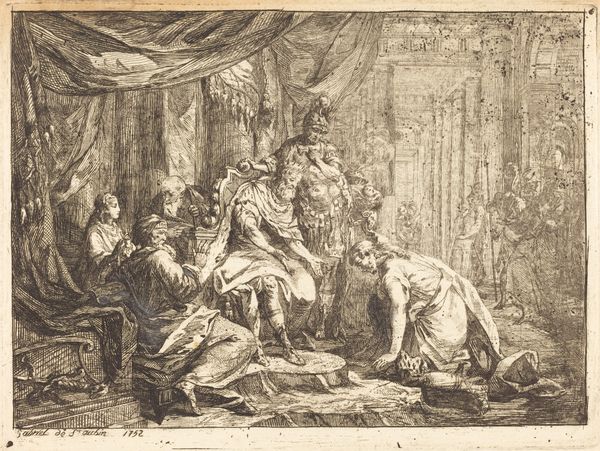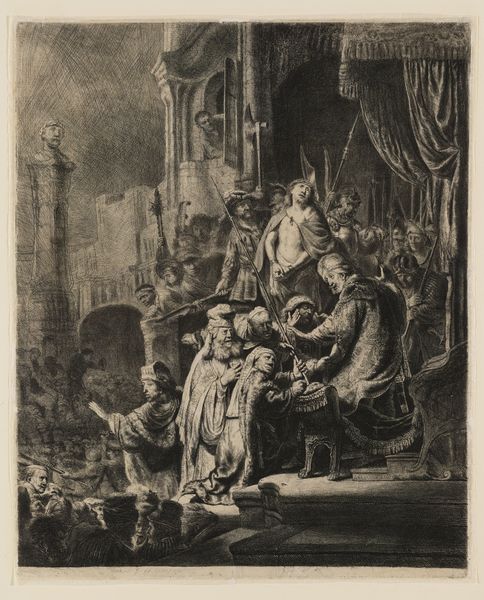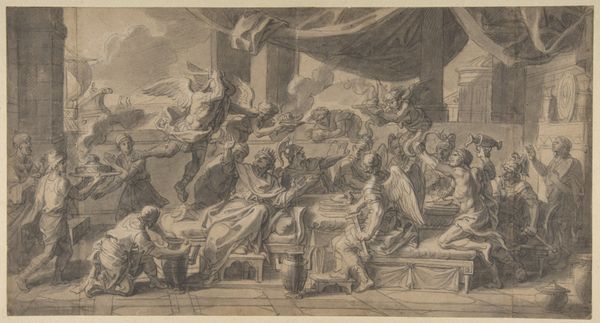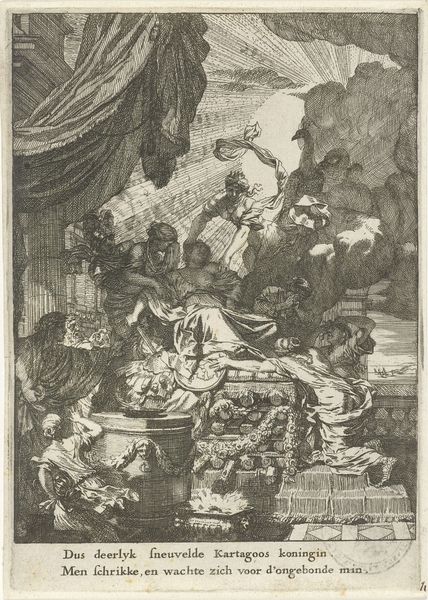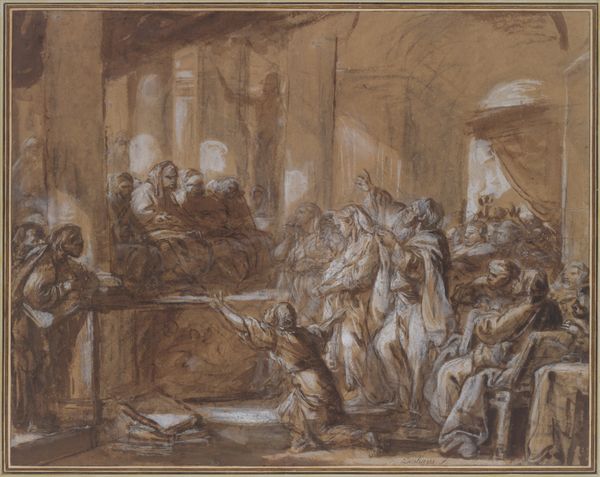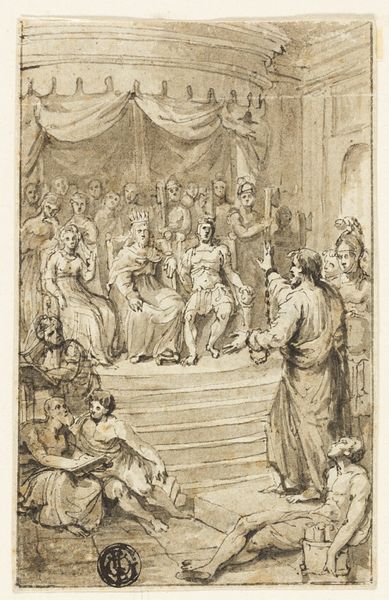
print, etching, drypoint
#
narrative-art
#
baroque
# print
#
etching
#
figuration
#
history-painting
#
drypoint
Dimensions: 16 1/16 x 12 1/8 in. (40.8 x 30.8 cm) (image)16 1/4 x 12 1/4 in. (41.28 x 31.12 cm) (sheet, irregular)
Copyright: Public Domain
Editor: Here we have Rembrandt van Rijn's "The Death of the Virgin," an etching and drypoint from 1639. It's striking how Rembrandt captured such a somber moment with incredible detail. What strikes you most about this piece? Curator: It's fascinating how Rembrandt used printmaking to engage with profoundly emotional narratives. Consider the role of the Catholic Church and wealthy patrons in commissioning these dramatic scenes. What statement was Rembrandt, a Protestant artist, making by depicting such a central Catholic subject? Editor: That's a perspective I hadn't considered. The composition seems theatrical, almost staged. Curator: Exactly! The Baroque style flourished under the gaze of powerful institutions. Reflect on how artistic choices like dramatic lighting and intense emotional expression served the Church's agenda. Does Rembrandt subvert or comply with this tradition in his print? Editor: I see the tension now. There's a realism in the figures' grief that feels very human and raw, yet the heavenly figures feel idealized and remote. Was Rembrandt commenting on the Church's representation of these events? Curator: Precisely. His use of etching and drypoint allowed for incredible detail, enabling him to render these figures with a mix of vulnerability and theatricality, thus fueling discourse on the period's social and religious climate. It’s an example of how art becomes a site of cultural negotiation. Editor: That's incredibly insightful. It's much more than just a depiction of a biblical scene. Curator: Absolutely. Rembrandt's "Death of the Virgin" encapsulates how art exists within and actively shapes historical discourse. Looking at it with that in mind enriches our understanding. Editor: This really opens up a whole new dimension for appreciating Rembrandt's work!
Comments
minneapolisinstituteofart almost 2 years ago
⋮
This distinctly Roman Catholic subject has less to do with religion than with artistic traditions. Many great artists have depicted the death of Mary, and Rembrandt gave the subject his own interpretation. Usually the Virgin is shown surrounded by the Apostles, but Rembrandt's gathering includes women, too. Mary is traditionally shown in the bloom of youth, but thinking through the human implications of the story, Rembrandt made her appropriately old and sick. For good measure, he invented a physician to check her pulse. The joy and freedom of his handling of the etching needle is especially evident in the upper register of the image, where the high-timbered chamber is visited by a host of cloud-borne angels. Rembrandt was willing to let the viewer see the how the image evolved, as evidenced by the arcing traces he left after reconfiguring the risers supporting the bed.
Join the conversation
Join millions of artists and users on Artera today and experience the ultimate creative platform.
